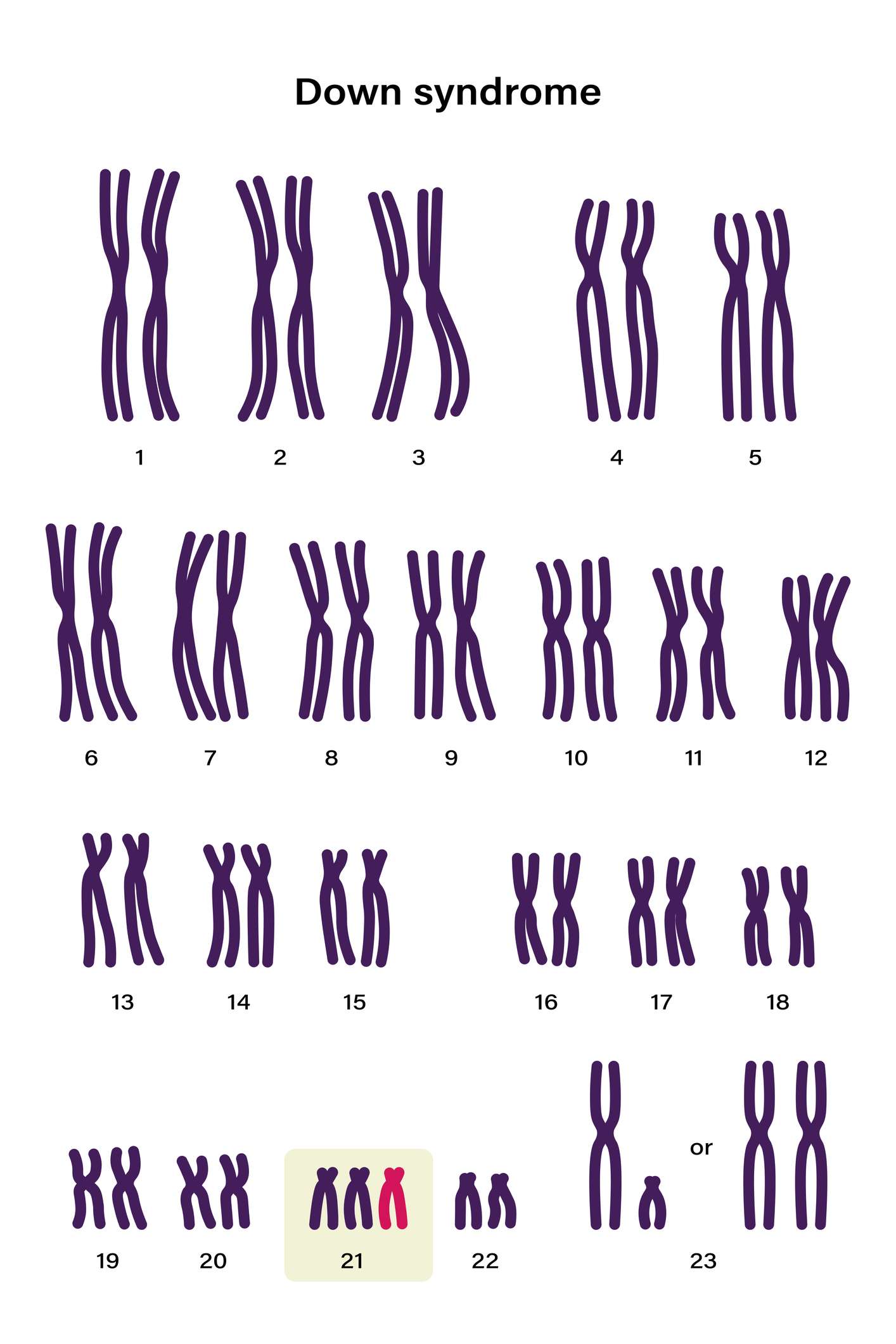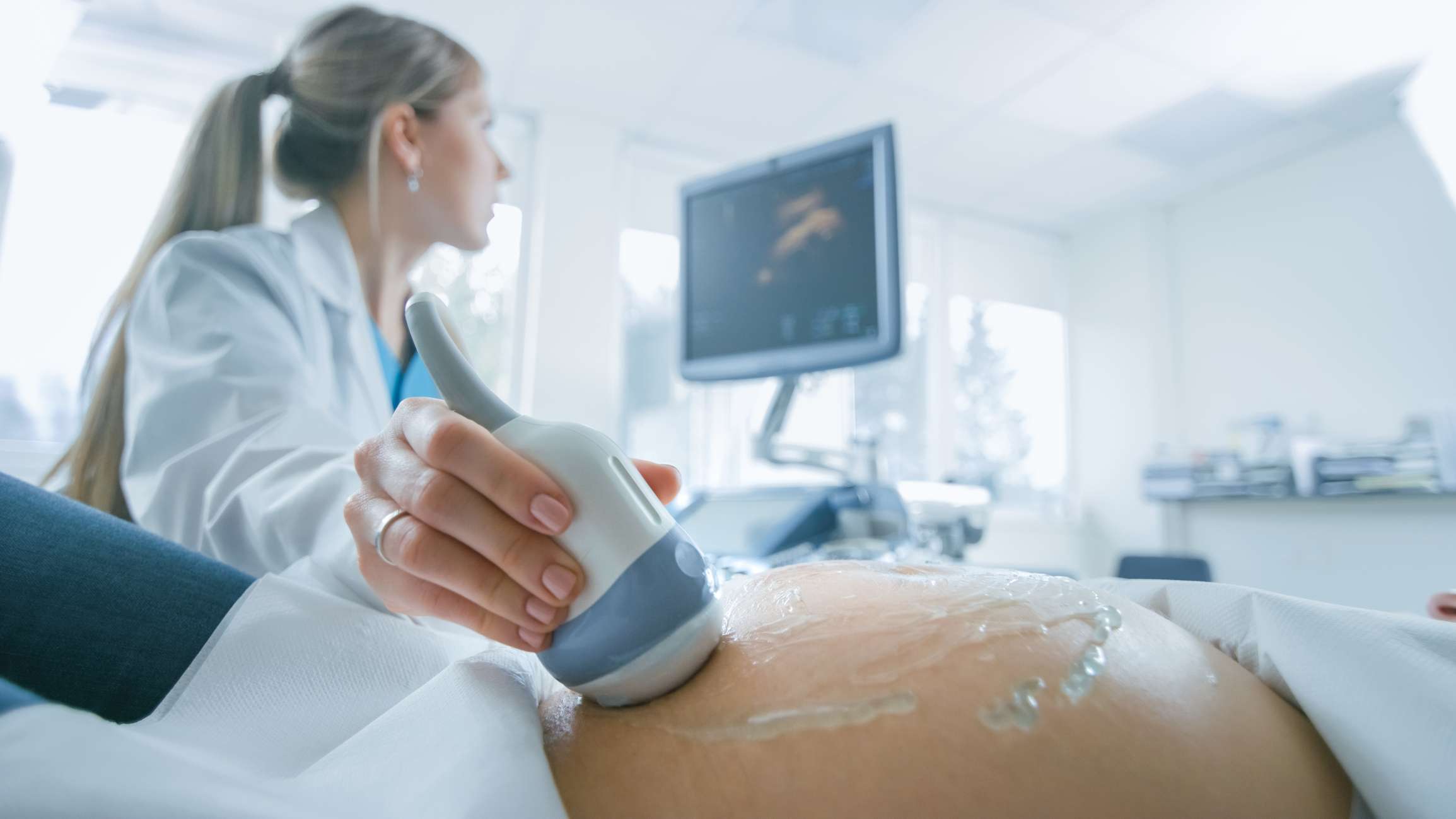a) Error in cell division
Free trisomy 21
The most common form of trisomy occurs when there is an error in germ cell production (egg or sperm). A cell division error is causative for trisomy 21 in 95% of cases.
The germ cells themselves develop from precursor cells that have a normal double set of chromosomes. Generally, these are 22 pairs of autosomes, plus two sex chromosomes - either XX in females or XY in males. Thus, in total, each cell comes up with 46 chromosomes or 23 pairs of chromosomes. Normally, during germ cell formation, the information of the genetic material is divided equally among the germ cells, which means that each germ cell has a single set of chromosomes (22 autosomes plus 1 sex chromosome = 23). The purpose of this is that in the event of subsequent fertilization, the fusion of male (sperm) and female germ cells (egg), simple sex cells, will again result in an organism with a double set of chromosomes.
During germ cell formation, however, mistakes can happen. If both duplicated chromosomes 21 land in a germ cell, it now has 24 chromosomes instead of 23. Later, after fusion with another "normal" germ cell, this results in a trisome cell, since it has chromosome 21 in triplicate. All cells derived from this cell have the same set of chromosomes and therefore also have a trisomy.
Mosaic trisomy 21
Rarely, it can also happen that during subsequent cell division, chromosome 21 is lost again in some cells ("trisomy rescue"), but not in others. Thus, some cells of the affected person contain 46 and others 47 chromosomes. This condition can also occur if errors occur during embryonic development and during the division of a single cell, 3 chromosomes 21 suddenly end up in a daughter cell (the other daughter cell therefore contains only 1 chromosome 21). As a result, both normal and trisomic cells develop.
Translocation trisomy 21
In this form of trisomy only 2 of 3 chromosomes 21 are free in the cell. The third chromosome is linked to another chromosome (usually 13, 14, 15 or 22). This type of trisomy occurs when the mother or father is a silent carrier (i.e. does not show any clinical symptoms). In this case, the affected parent with the attached chromosome (i.e. translocation) is called a "balanced" translocation 21.
b) Age of the mother
It has been proven that as the age of the mother increases at the time of conception, the risk of Down syndrome increases. In the age group of 35 to 40-year-old women, the probability is 1:260, and in 40 to 45-year-old women, the risk is as high as 1:50. In general, however, it can be said that with every pregnancy there is a possibility that a child will be born with a genetic defect - such as Down syndrome.
The increasing risk of Down syndrome with increasing age of the mother is explained by the fact that egg cell division is more susceptible to disruption at an older age, which makes it easier for chromosomes to be maldistributed. The age of the father is not important, as far as is currently known.
c) Other risk factors
Researchers suspect that in addition to endogenous (internal) causes, such as certain gene variants, exogenous causes may also play a role in the development of Down syndrome. These include ionized radiation, excessive cigarette consumption, alcohol abuse, use of oral contraceptives, or viral infections at the time of fertilization. However, these factors are controversial and have not yet been scientifically proven.




